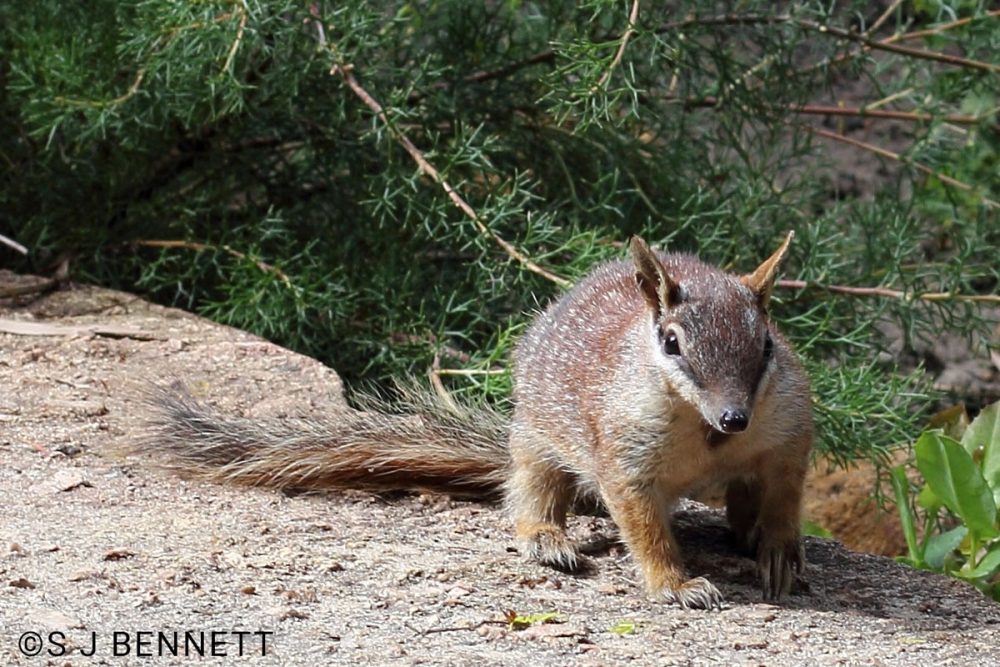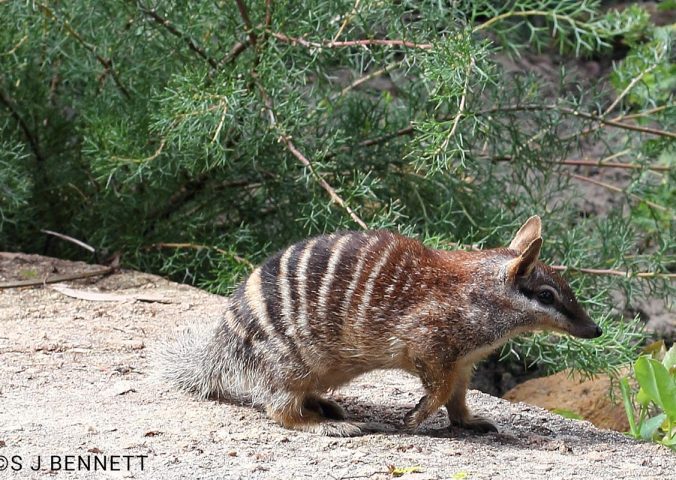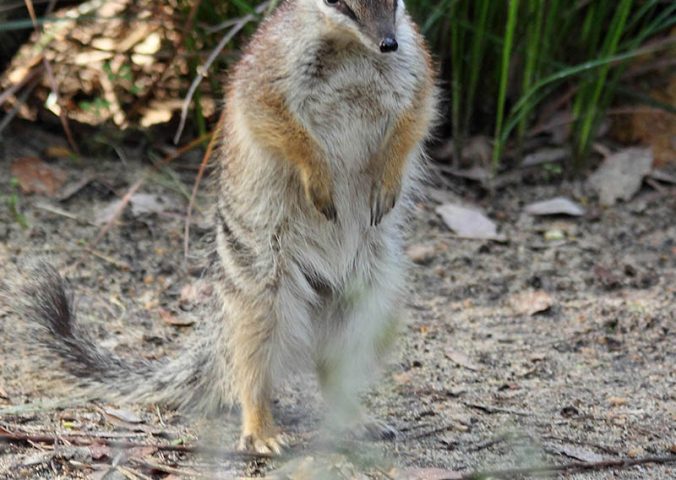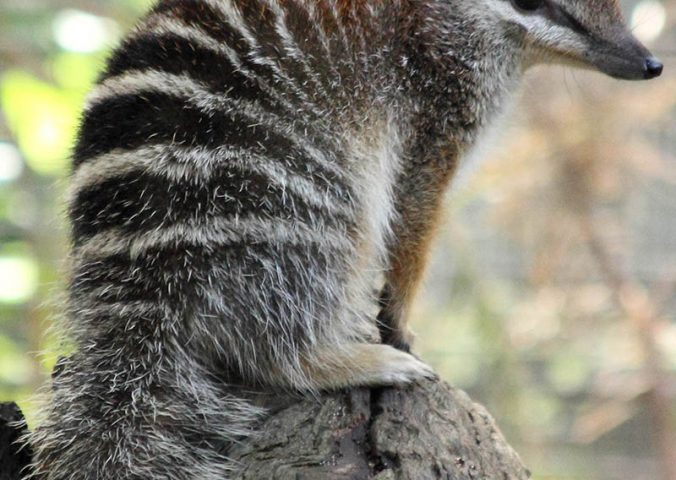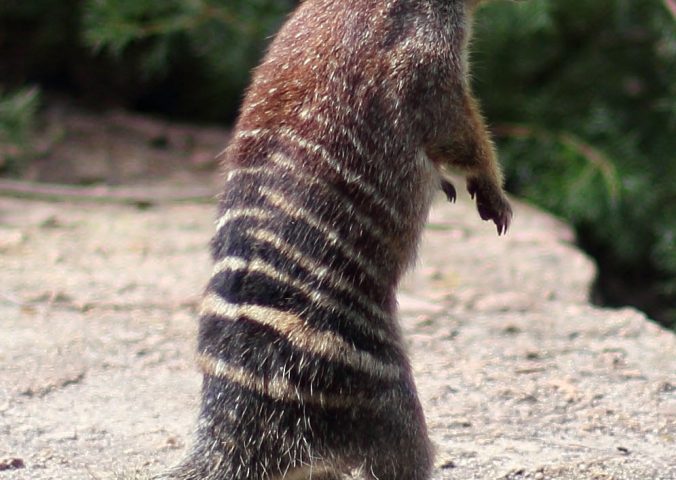About
The numbat is a highly distinctive carnivorous marsupial.
It is not closely related to any living marsupial (one of its closest relatives is the now extinct thylacine or Tasmanian tiger), it’s the sole member of its taxonomic family, lacks a pouch, and is one of only two marsupials to be active exclusively during the day. It is also the only marsupial to feed strictly on social insects: individuals suck up around 20,000 termites a day with their long, sticky tongues. Once widespread across Australia, the species is now extinct in over 99% of its former range, primarily as a result of introduction of foxes by European settlers. Because they are active during the day (due to their eating habits) they are overly exposed to predators. Further reasons for their decline include altered fire regimes, which reduced the amount of hollow logs numbats like to use as shelter, and also the conversion of woodland habitats into agricultural land. Extensive conservation efforts are underway to save the two remaining natural populations, while conservation breeding and reintroduction programmes have succeeded in establishing six populations in areas of the numbat’s former range.
- Order: Dasyuromorphia
- Family: Myrmecobiidae
- Population: <1,000
- Trend: decreasing
- Size: 175-290
- Weight: 300-752g
EDGE Score
Distribution
Following European colonization it has experienced a dramatic decline and is now extinct in more than 99% of its former range. Only two original populations still survive, one at Dryandra Woodland and the other at Perup Nature Reserve, these two sites are separated by 150 km of unsuitable habitat.
Habitat and Ecology
Prior to European settlement, numbats occurred in semi-arid and arid woodlands and grasslands. Today they are restricted to woodlands in the wettest periphery of their former range. The heartwood of the majority of trees in this habitat is eaten out by termites and the hollows are thought to provide an important form of shelter to the numbats. Numbats feed almost exclusively on termites, requiring around 20,000 each day, which it sucks up from dead trees, logs and leaf litter with its long, thin tongue.
